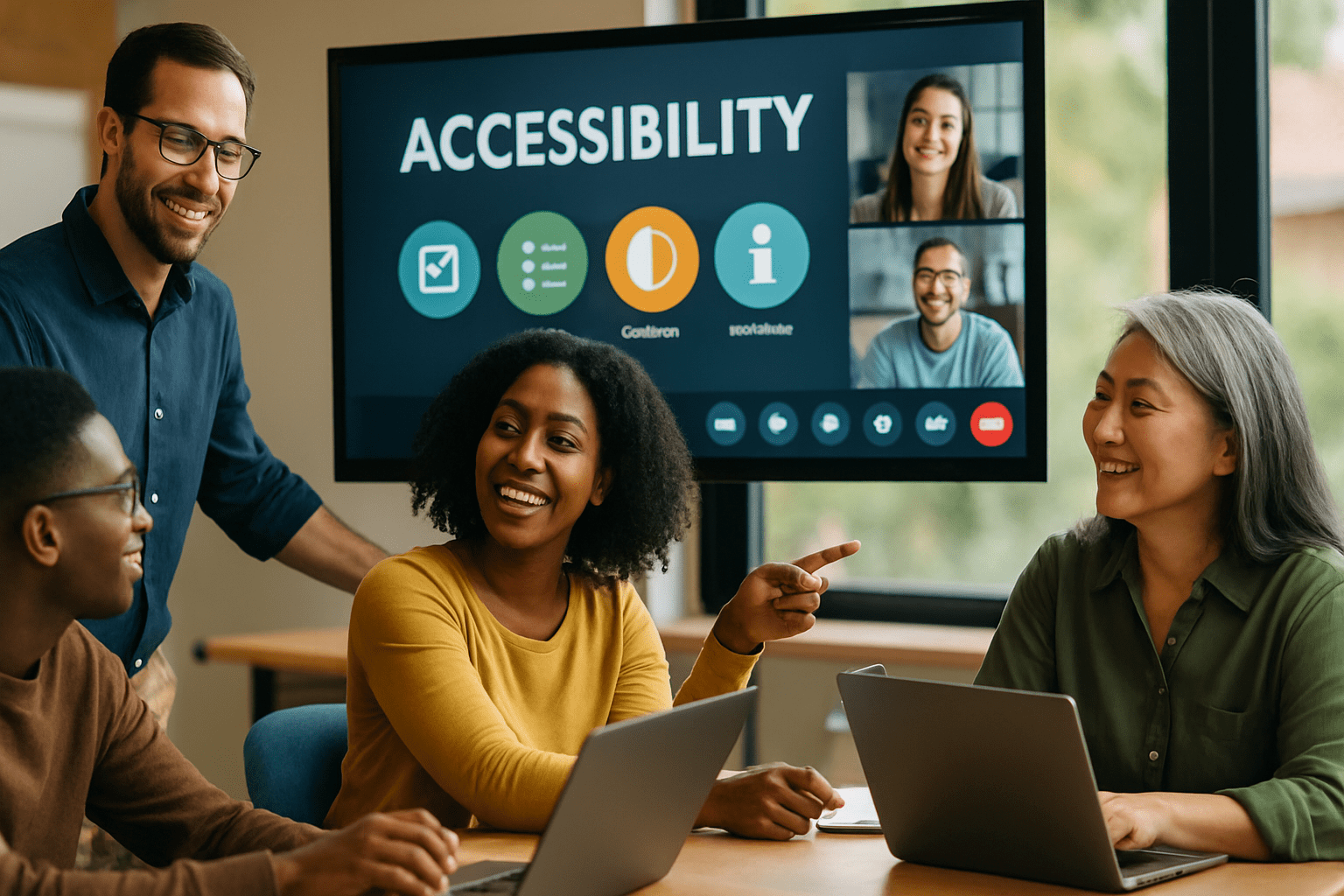Making Courses Count: Better Teaching Starts with Moodle Accessibility Training
If your course content isn’t usable by every learner—regardless of ability or device—it’s only doing half the job. That’s where Moodle accessibility training by Pukunui comes in. Designed for beginners and those improving their digital teaching skills, this practical half-day training introduces clear strategies for creating inclusive, accessible learning using your own Moodle™ platform.
You don’t need to be a developer. You don’t need prior accessibility experience. We’ll show you how to apply universal design principles, improve content accessibility, and meet standards like WCAG 2.1—without losing your sanity or spending weeks learning Moodle inside out.
Accessibility Tools in Moodle™ You Should Actually Use
The Moodle™ project includes built-in and add-on accessibility tools—if you know where to look. Here are some essentials we help training participants master:
- Atto Editor: Understand how to use the text editor to format content accessibly, including meaningful headings and alt tags.
- Accessibility Checker plugin: Spot issues directly while editing pages—like poor colour contrast or missing image descriptions.
- Brickfield Education Lab tools: For sites using Brickfield, this provides a detailed analysis of accessibility in course content.
Assigning Activities That Work for Everyone
Inclusive activity design means all students can demonstrate understanding, participate, and interact comfortably. Examples from our training include:
- Creating assignments that allow for audio or video submissions—not just text
- Structuring forum discussions clearly for screen reader users
- Using quizzes that avoid colour-coded feedback only
How to Design Content with WCAG 2.1 in Mind
We break down the WCAG 2.1 accessibility standards so they’re actually manageable. Our training links each guideline to realistic steps in your Moodle™ content—like ensuring adequate text contrast, consistent navigation, and keyboard operability.
Quick Starter Checklist:
- Use meaningful link text like “Download lesson 1 PDF” instead of “Click here”
- Include closed captions for embedded videos
- Structure your course using proper headings
Clear and Consistent Course Layout Wins (Every Time)
We guide you in organising course content so every learner knows what’s due, where resources live, and how to track their progress. Predictable structure helps students with cognitive impairments—and frankly, it helps everyone else too. One lesson plan that ends up in three different menus? It’s basically Moodle hide-and-seek.
Practical Exercises, Real-World Fixes
Our sessions use realistic course pages for hands-on improvement. Bring your real content, and we’ll run it through checkers while updating it live. You’ll use Moodle’s default theme and test accessibility with screen reader simulations. You’ll also have the opportunity to explore the Moodle activities block overview, which highlights the various interactive elements available for enhancing your course engagement. By incorporating these activities, you’ll be able to create a more dynamic learning environment that caters to diverse student needs. Our sessions emphasize practical strategies that ensure your content is not only accessible but also engaging for all learners. In addition to enhancing your course content, our sessions will delve into effective Moodle implementation for tuition centres, tailoring the platform to support specific educational goals. Participants will gain insights into best practices and strategies for maximizing student interaction and retention, ensuring a smooth transition to an engaging online learning environment. With these tools and techniques at your disposal, you’ll be equipped to foster an inclusive atmosphere that motivates learners to thrive.
Benefits You’ll Walk Away With
- Confidence using basic Moodle features to create accessible content
- Understanding of universal design and how it applies to digital learning
- The ability to perform basic accessibility checks on your pages
- Knowledge of how to adapt course activities to meet diverse needs
Why Accessibility Enhances Content for All Learners
Content accessibility isn’t about ticking compliance boxes—it’s about improving clarity, usability and learning outcomes for all. Making a page work with a screen reader often helps mobile users too. Everybody wins when your site avoids cognitive clutter.
Get Friendly with Screen Readers and Text-to-Speech Tools
We introduce free screen reader tools and show how they interact with your course layout. We also look at text to speech options, including how learners might adapt the interface themselves with tools like ReadSpeaker or browser extensions.
FAQs About Moodle Accessibility Training
What will I learn in the Pukunui LMS Accessibility and Universal Design Training?
You’ll learn how to design inclusive Moodle™ courses using accessibility standards, manage content with the Atto editor, structure clear navigation, and run basic accessibility checks using tools like the Brickfield checker. Additionally, you will explore best practices for integrating multimedia resources that cater to diverse learning styles. Emphasizing inclusive design in Moodle courses will ensure that all learners, regardless of ability or background, can fully engage with the content. As you implement these techniques, you’ll create a more equitable and effective learning environment for every student. By prioritizing accessibility and inclusivity, you will enhance the overall experience for all users, making Moodle for effective online learning a reality. Continuous feedback from your learners can also inform adjustments to your course design, ensuring that it evolves to meet their needs. Ultimately, this commitment to fostering an inclusive learning atmosphere benefits everyone and promotes a culture of respect and collaboration.
Is this training suitable for people new to Moodle?
Yes. We specifically built this training for beginners and those with limited Moodle experience. You’ll learn core tasks like course setup, resource management, and activity design—all from an accessibility-first perspective.
How long is the training session?
This is a focused half-day course designed to deliver maximum impact in minimal time. You’ll gain actionable skills you can apply immediately—no long-term commitment required.
Do I need technical knowledge or coding experience?
No coding required. We teach you to use built-in tools and common Moodle features to make your content more accessible. If you know how to upload a file or write a forum post, you’re good.
Will I learn how to use accessibility checkers?
Absolutely. We teach you how to use the Moodle Accessibility Checker and provide guidance on interpreting its results, prioritising issues, and improving your course materials effectively.
Your Next Move Towards Accessible Learning
Creating inclusive digital spaces doesn’t need to be overwhelming—or optional. Our Moodle accessibility training will give you the strategies, tools, and confidence to support every learner who enters your course. Want to see what that feels like?
Let’s talk. Contact us for more information or register for an upcoming session today.

